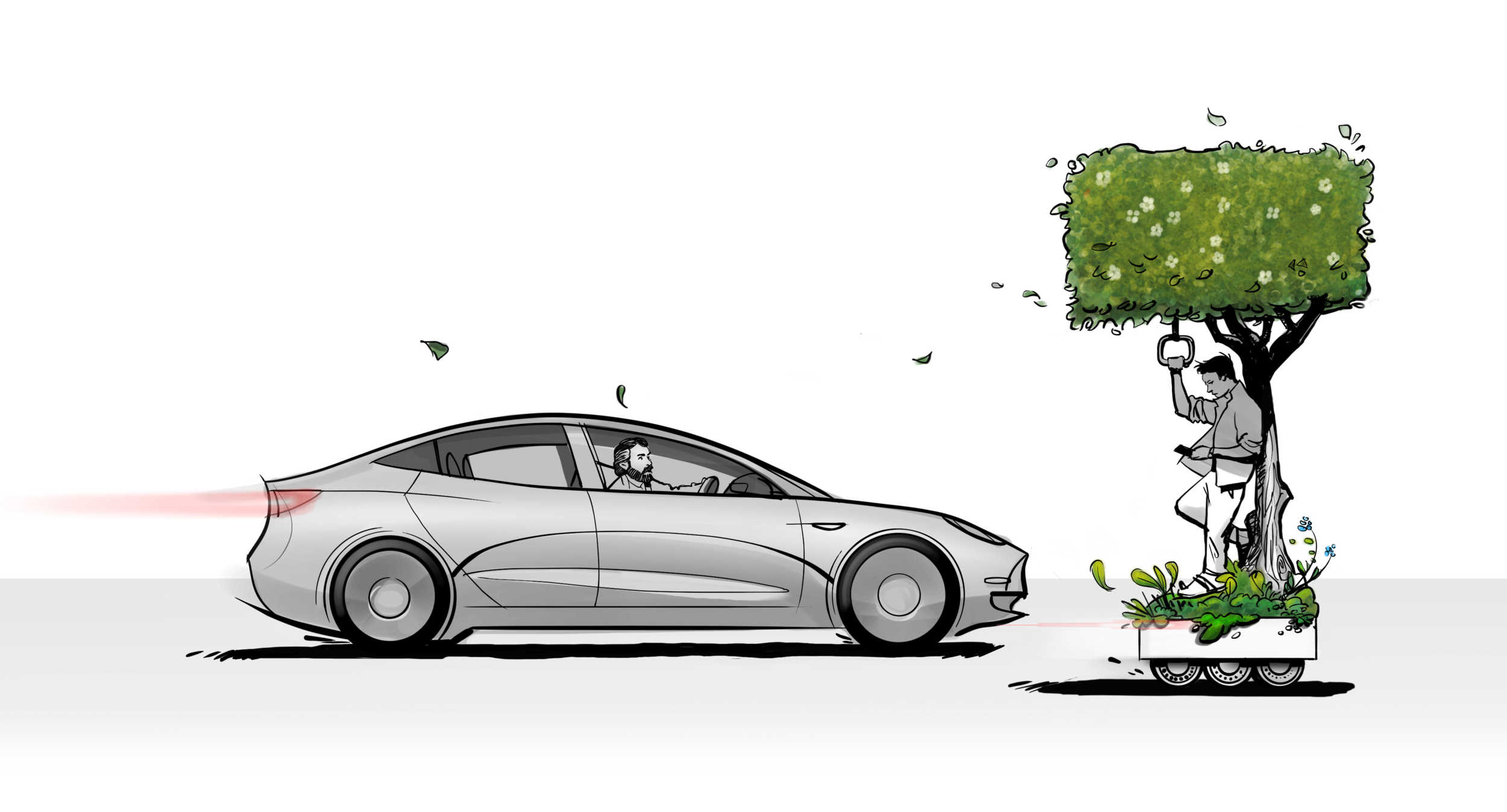Boxwood
Last Mile Vision
How we solve scooters is our Kobayashi Maru, a test of one's character, a solution that involves redefining the problem and managing an insurmountable scenario gracefully.
Rather than accepting the assumption that scooters are the best answer to the last mile problem and that they just need incremental refinements (geofencing, charging stations, monitoring, bigger wheels, more attractive styling, etc.) to compensate for shortcomings, we should step back (way back) and reassess the original problem.
The last mile is about frictionless transport of individuals over short distances in urban settings as effortlessly and safely as possible.
Scooters attempt to solve this problem with ubiquity; there is always a scooter nearby. However, scooters ask a lot of humans; balance, navigation, observing and obeying traffic laws, finding a place to park the scooter, recharging, and redistribution. To solve each of these issues for scooters would necessitate a multitude of fixes, both technical and social.
Fortunately, we are rapidly approaching a new era in regard to autonomous vehicles. Many experts expect the technology to be broadly deployed within a few years. While most peoples’ attention is focused on autonomous cars, a great deal of progress has been made in smaller platforms; specifically autonomous wheeled delivery robots like the Amazon Scout. Scout currently navigates pedestrian sidewalks to deliver boxes, but it could just as easily navigate bicycle paths to deliver passengers.
These delivery robots solve several of the key pain points with scooters. 1. They don’t break traffic laws. 2. They don’t accumulate in piles, as they move on to the next delivery (or ride). And 3. Their heavier weight and larger wheels provide a safe roadworthy transport platform.
There is a fourth criterion we could assign to any product that monetizes our common pubic spaces; citizenship. Scooters and the companies that operate them fail to recognize the fact that they are layering their solution on the pubic space we all share. While scooters are handy and useful for those who use them, the rest of us have to suffer the myriad new problems they create.
How do we transform a bot into a citizen?
Citizenship is about participating in solutions; giving a little more than we take. If our transport solution offered intrinsic benefits to riders and the community or environment, we might consider this bot a citizen. Then how can a delivery bot clean, beautify, and cool our urban spaces?
With trees.
Trees are perhaps the most common and most effective means of improving the quality of our common spaces. They consume CO2, produce oxygen, provide food and shelter to wildlife and they help cool urban heat islands. Attaching a living tree to each of thousands of bots creates a mobility forest in our otherwise blacktopped streets.
Introducing Boxwood, a nature-based autonomous last-mile transport system designed to make life in the city healthier, safer, and more beautiful.
Unused Boxwood transporters don’t produce clutter, they produce tiny urban parks.
Boxwood transporters don't create waste, they create shade oxygen, and beauty all while reducing congestion and consuming CO2.
Boxwood transporters are safe, because they drive themselves autonomously, while always observing the traffic laws.
Boxwood infrastructure will be maintained by arborists with tech skills. This creates sustainable dignified local employment.






